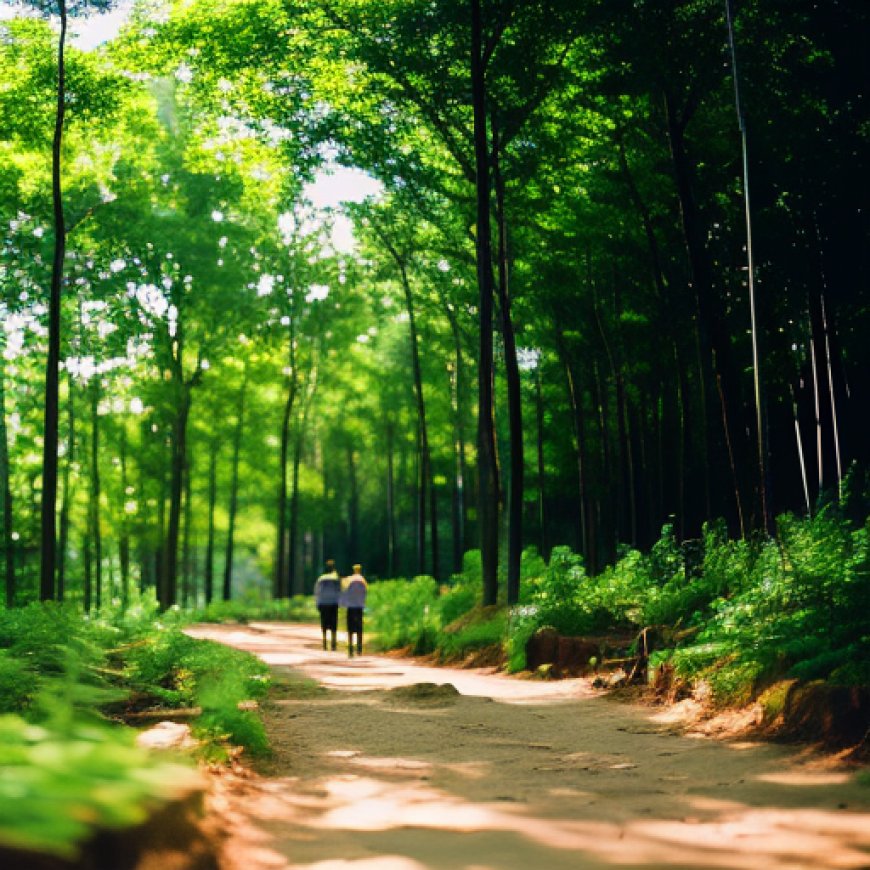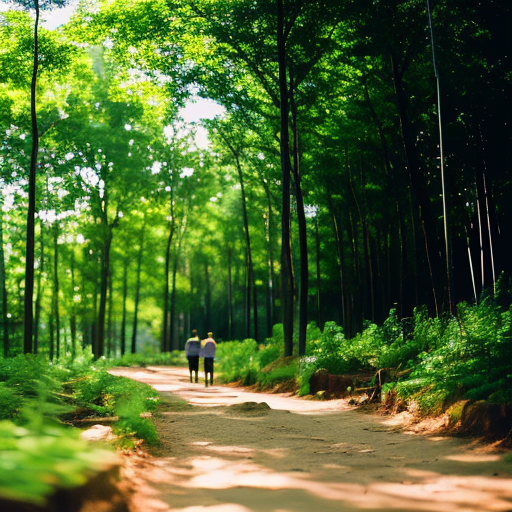Borshijora Ecopark: A failed attempt to harness untapped ecotourism potential
Borshijora Ecopark: A failed attempt to harness untapped ecotourism potential The Daily Star


To harness the untapped potential of ecotourism in the region, the Borshijora Ecopark was set up in 2006 across a vast expanse of natural reserve forest in Moulvibazar Sadar upazila.
Nearly two decades on, the eco-park could not even be fully opened due to a lack of manpower, adequate security measures, and necessary eco-friendly facilities.
Visiting the eco-park recently, this correspondent found only three persons were employed for the management and security of its entire 887-acre forest area.
According to the Wildlife Management and Nature Conservation Department, Borshijora Ecopark was set up in the protected forest area to preserve its biodiversity and attract tourists, at a cost of around Tk 100 crore.
Initially, two double-room eco-cottages, four picnic spots, two observation towers, four security outposts, five public toilets, a ticket counter, and an archway were constructed in 2006-07 for tourists at the eco-park. However, despite being in the vicinity of local settlements, there has not been any security measure to prevent the free movement of people through the park area.
As such, due to a lack of security and an acute manpower crisis, the eco-park could not be started properly.
Very occasionally, one or two tourists visited the park after it was launched. Still, it largely failed to grasp the interest of tourists, said Shaheen Alam, a junior wildlife scout of the Wildlife Management and Nature Conservation Department.
Over the years, the cottages and other infrastructure in the eco-park have become unusable. The park is largely unprotected, with no boundary wall, thereby allowing people to trespass through the area.
Locals were seen freely moving through paths in the eco park’s Karali Tila, Hiron Kuchi, and Goalabari areas, where there were dense forest covers of Eucalyptus, Sal, and various other trees. Several trees were found felled by the forest department in the Hiron Kuchi area. Many dead skylarks were also seen there, suggesting that those died when the trees were felled.
The iron staircase leading to the observation tower was found broken.
According to the Sylhet divisional office of the department, a project titled “Forestry and Eco-tourism Development in Lawachhara-Satchhari National Park and Borshijora Ecopark” was submitted to the Forest Department in 2022.
The project recommended setting up eco-tourism facilities in the forest areas to help the wildlife and biodiversity thrive and sustain while also attracting tourists and thereby helping propel the region’s economy. It, however, did not progress further.
“With settlements around the eco-park, it is not possible to ensure security with only three staffers. There is no boundary wall. People use the paths through the park all day and night. The manpower needs to be increased as well as security infrastructure,” said Abu Naeem Md Nurunnabi, beat officer at Borshijora Ecopark.
“Long-term planning is needed for the eco-park. A master plan is being worked on to that end,” said Jahangir Alam, divisional forest officer in Sylhet.
SDGs, Targets, and Indicators Analysis
-
SDGs Addressed or Connected to the Issues
- SDG 15: Life on Land – This goal focuses on protecting, restoring, and promoting sustainable use of terrestrial ecosystems. The article discusses the Borshijora Ecopark, which was set up to preserve the biodiversity of the forest area and attract tourists.
- SDG 8: Decent Work and Economic Growth – This goal aims to promote sustained, inclusive, and sustainable economic growth, full and productive employment, and decent work for all. The article mentions the need for manpower and infrastructure to develop the eco-park and attract tourists, which aligns with this goal.
- SDG 11: Sustainable Cities and Communities – This goal focuses on making cities and human settlements inclusive, safe, resilient, and sustainable. The article mentions the lack of security measures and the free movement of people through the park area, indicating a need for improved security and management of the eco-park.
-
Specific Targets Based on the Article’s Content
- Target 15.1: By 2020, ensure the conservation, restoration, and sustainable use of terrestrial and inland freshwater ecosystems and their services. The establishment of the Borshijora Ecopark aims to preserve the biodiversity of the forest area.
- Target 8.9: By 2030, devise and implement policies to promote sustainable tourism that creates jobs and promotes local culture and products. The development of eco-tourism facilities in the forest areas is recommended in the project submitted to the Forest Department.
- Target 11.7: By 2030, provide universal access to safe, inclusive, and accessible, green, and public spaces, particularly for women and children, older persons, and persons with disabilities. The article highlights the need for security measures and infrastructure to ensure the safety and accessibility of the eco-park.
-
Indicators Mentioned or Implied in the Article
- Indicator 15.1.1: Forest area as a proportion of total land area. The article mentions the establishment of the Borshijora Ecopark across a vast expanse of natural reserve forest.
- Indicator 8.9.1: Tourism direct GDP as a proportion of total GDP and in growth rate. The development of eco-tourism facilities in the forest areas aims to attract tourists and contribute to the region’s economy.
- Indicator 11.7.1: Average share of the built-up area of cities that is open space for public use for all, by sex, age, and persons with disabilities. The article highlights the lack of security measures and infrastructure in the eco-park, indicating a need for improved accessibility and safety for all visitors.
SDGs, Targets, and Indicators Table
| SDGs | Targets | Indicators |
|---|---|---|
| SDG 15: Life on Land | Target 15.1: By 2020, ensure the conservation, restoration, and sustainable use of terrestrial and inland freshwater ecosystems and their services. | Indicator 15.1.1: Forest area as a proportion of total land area. |
| SDG 8: Decent Work and Economic Growth | Target 8.9: By 2030, devise and implement policies to promote sustainable tourism that creates jobs and promotes local culture and products. | Indicator 8.9.1: Tourism direct GDP as a proportion of total GDP and in growth rate. |
| SDG 11: Sustainable Cities and Communities | Target 11.7: By 2030, provide universal access to safe, inclusive, and accessible, green, and public spaces, particularly for women and children, older persons, and persons with disabilities. | Indicator 11.7.1: Average share of the built-up area of cities that is open space for public use for all, by sex, age, and persons with disabilities. |
Behold! This splendid article springs forth from the wellspring of knowledge, shaped by a wondrous proprietary AI technology that delved into a vast ocean of data, illuminating the path towards the Sustainable Development Goals. Remember that all rights are reserved by SDG Investors LLC, empowering us to champion progress together.
Source: thedailystar.net

Join us, as fellow seekers of change, on a transformative journey at https://sdgtalks.ai/welcome, where you can become a member and actively contribute to shaping a brighter future.







